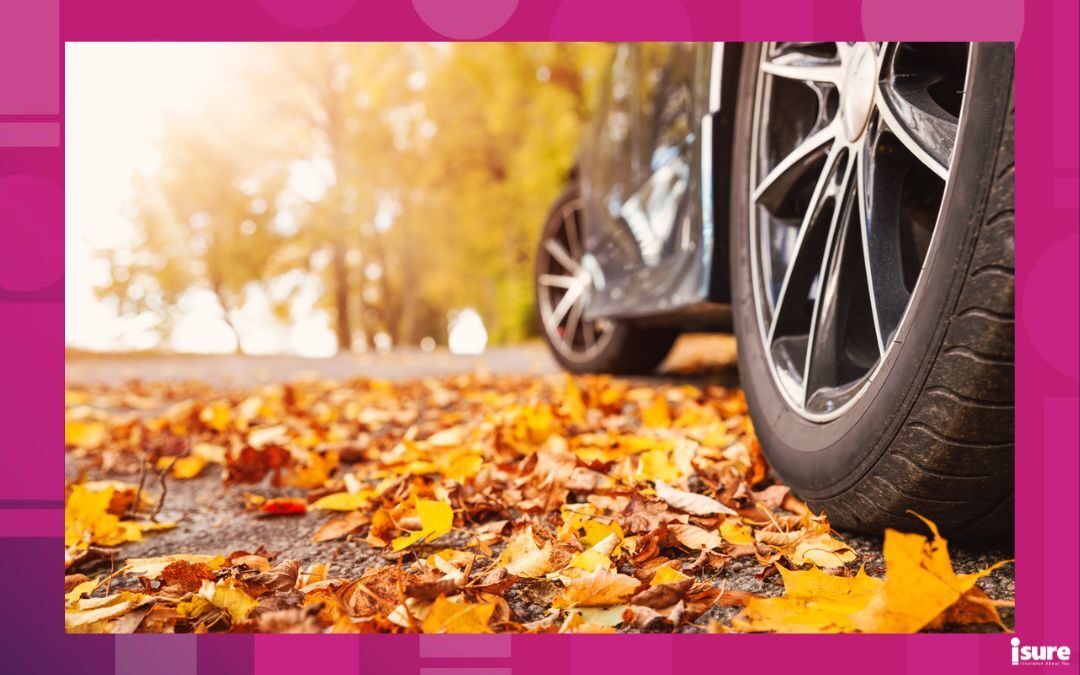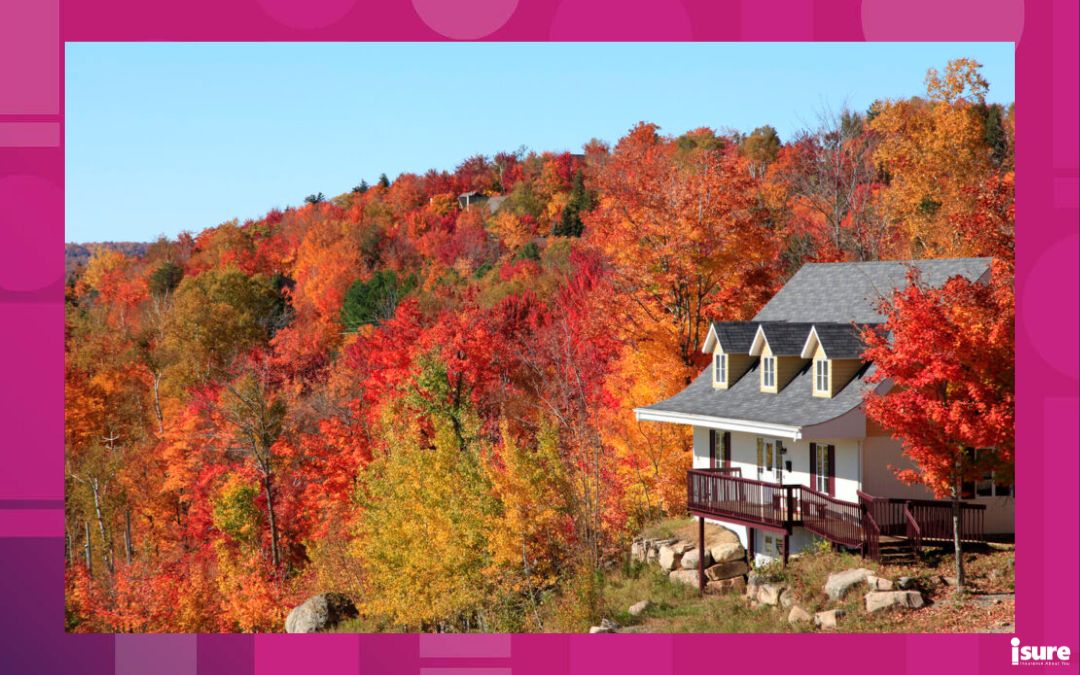We are entering the dog days of summer; the days are getting shorter and children will be heading back to class. It’s fall, and you know what that means! Falling leaves, a drop in temperatures and changing road conditions. So naturally, now is the ideal time to give your car some extra attention. Before the road conditions change, you should start to think about getting your car ready for fall. Follow isure’s fall car maintenance checklist and enjoy the changing of the leaves with peace of mind.
Easy fall car maintenance tips
1. Replace your wiper blades
We all know that inevitably, our vehicle’s wiper blades wear down, crack, and are rendered useless. If they’re not cleaning your windshield thoroughly, leaving streaks of water on your windshield, try cleaning the blade with a paper towel and glass cleaner. If it doesn’t make a difference, then it’s time to replace your blades with new ones. Luckily, blades are pretty inexpensive, and you can get a decent set for $30 or $40. Wiper blades need replacement once every few years, so if you haven’t turned yours on in a while, make sure to replace them, if necessary.
2. Test your heater/defroster
Now is the perfect time to do this. You probably haven’t used your vehicle’s heater since last spring, so make sure to test that every vent is blowing hot air. Also, check your front and rear defroster to ensure that they are working. If it’s taking too long, consider getting your heater and defroster systems repaired. You’ll thank yourself in January for following these fall car maintenance tips!
3. Change your oil
Check your owner’s manual if you are not sure when it’s time to change your oil. Pop the hood and check it; if your oil is looking dirty, then it’s time. Without the proper amount of engine oil, your engine will start to break down and cause you potential issues in the future. And those repairs are expensive! You should get an oil change once every 5,000–10,000 km. If your car doesn’t have an oil change sensor, be sure to book your oil change whenever you book your tire changeover as an easy reminder.
4. Check your brakes and tires
Your tires and brakes are two of the most important parts of your vehicle. We’re all guilty of taking them for granted. Here’s what to look for:
- Check your stopping power
- How does your car stop in rainy weather?
- Do your tires have noticeable wear?
- Check your tire pressure
Luckily, most dealerships will inspect your brakes and tires, free of charge.
Remember to check ALL your tires!
Be sure to inspect your all-season, spare and winter tires to ensure that they have more than 5/32” tread left on them. This can be tested with the Queen’s Crown Test. Also ensure that there are no cracks or bulges in your tires, as well as no debris stuck in your tires. If you notice anything abnormal with your tires, bring your vehicle in to your local mechanic or dealership to have a proper assessment. If your brakes aren’t working well, adding the rainy fall season can be an accident just waiting to happen. Brake pads will wear out over time, and you don’t want your brakes to fail when you’re trying to stop in wet conditions. In order to stay safe, you’ll want to check your brakes before fall hits. Don’t skip this fall car maintenance checklist item!
5. Check your lights
Now that the days are shorter, you will be using your vehicle’s lights more often. Walk around your vehicle with your lights turned on; check the headlights, taillights, parking lights, brake lights, emergency flashers, as well as your interior lights. If they are all in working order, make sure your lights are clean. As cars age, the headlights can become cloudy or hazy, especially on cars that are routinely parked outside. More than a cosmetic problem, cloudy lenses can pose a serious threat to safety, compromising night vision and reducing the effectiveness of your headlights by up to 80%. Your visibility will be instantly improved, and you’ll feel a lot safer during those fall storms.
DYK: Lens covers can be made clear again using a headlight restoration kit. You can find kits starting for as little as $14 at canadiantire.ca.
6. Check your air filter
The air filters in your car should also be replaced prior to the winter months; twice a year is highly recommended. Air filters are an extremely important component of vehicle maintenance. Blocked filters contribute to restricted airflow and as a result, the fuel economy, performance, as well as your vehicle emissions, can become compromised.
Here’s an easy way to test whether or not you need to replace your filter: Simply place it in front of a 60-watt bulb. If you can’t see through the filter, it’s time to replace it.
7. Have your battery checked
No car maintenance checklist would be complete without popping the hood. Make sure your car will be able to start throughout the oncoming winter. Car batteries generally last about five years, so it’s a good idea to get yours tested once a year. Be sure to have a technician check your battery for you, and if necessary, replace it. This is about more than just a dying battery. Many batteries are corroded, while others have loose cable connections. If not addressed, it could lead to a variety of electrical problems causing ignition issues. You won’t know these things until it’s too late. If you are vehicle savvy, you can instead purchase a brush that is designed to clean corrosion from the cable connectors and posts.
For an inexpensive brush to address battery corrosion, please click here.
8. Check your fluids
Check your washer fluid, transmission fluid, brake fluid, and power steering fluid. Have them topped up if they’re not at or above minimum safety requirements. Check your coolant level in the overflow tank when your engine is COLD. Please keep this in mind! If the level is low, add a 50/50 combination of water and coolant. If your car is a bit older, it might even be necessary to refill the cooling system.
9. Give your vehicle a full cleaning
Make sure to take your car to the car wash and give it a full cleaning, inside and out. Make sure to vacuum, too! You won’t want to be doing it when it is -20°C outside, so do it now before it’s too late.
10. Replenish emergency kit
If you already have an emergency kit in your car, that’s great! However, you may want to consider adding a couple of items due to the change of seasons. A few ideas might be to add road salt, extra warm blankets, and an ice scraper. If you don’t have an emergency kit yet, we highly recommend making one or buying one online. They can be life-saving in an emergency situation, and you never know when disaster may hit.
A small bag of kitty litter can be a real lifesaver in icy road conditions. To help give you some much-needed traction, place some of the gravel in front of your tires to help get you on your way.
We hope that our fall car maintenance checklist helps you stay safe on the road. Proper maintenance can be the difference to getting out and about or being stranded. Remember, it’s important to not only maintain your vehicle, but it’s also a good idea to go through your auto insurance coverage a few times per year in order to address any endorsements that you have been thinking of adding for better, customized protection. Call one of our isure representatives today with any questions about your coverage!




